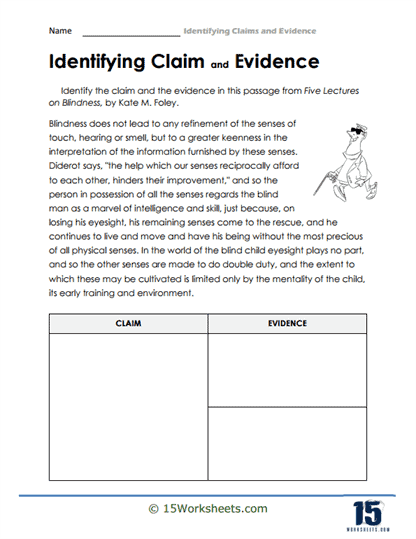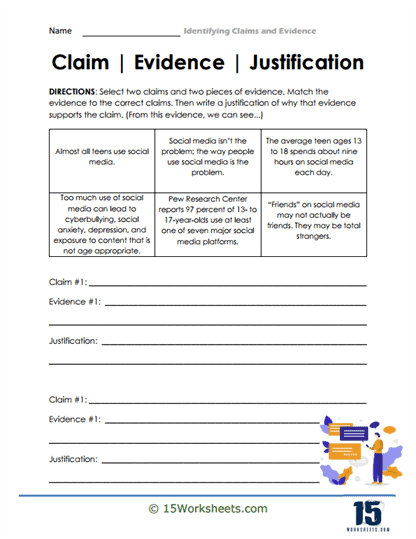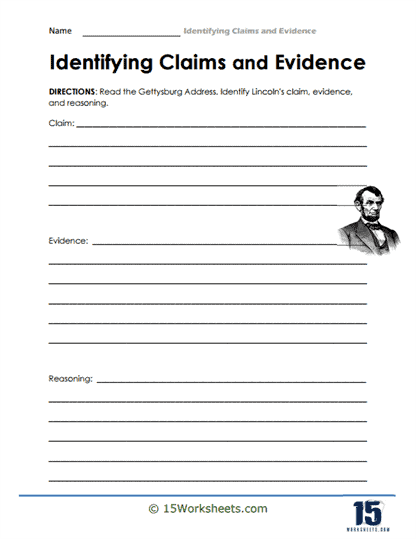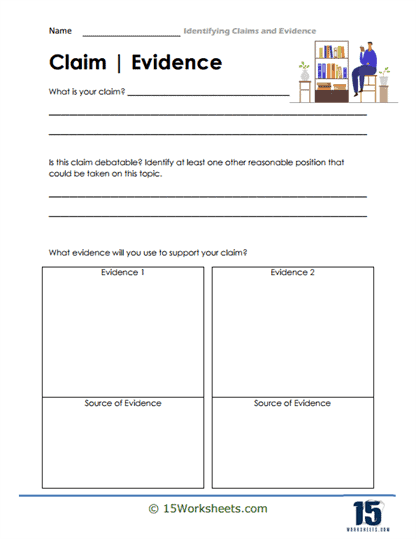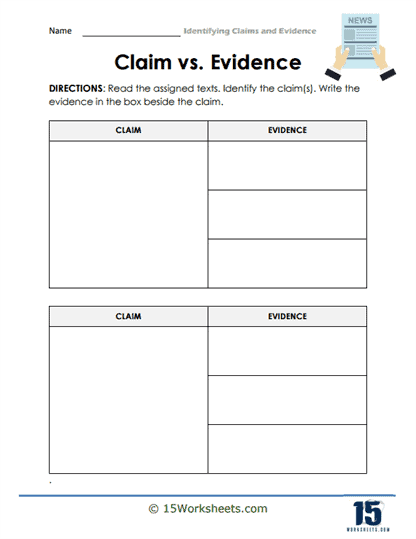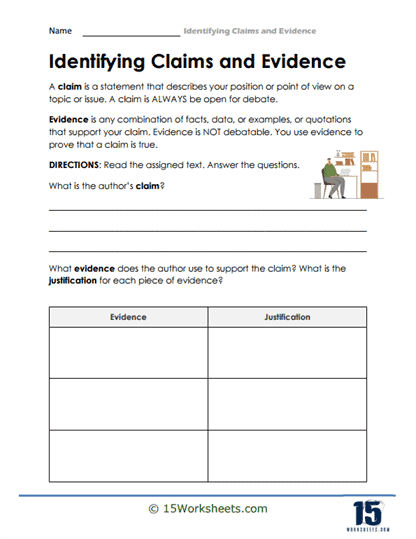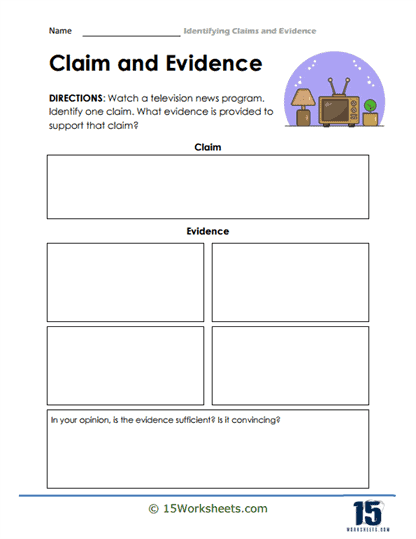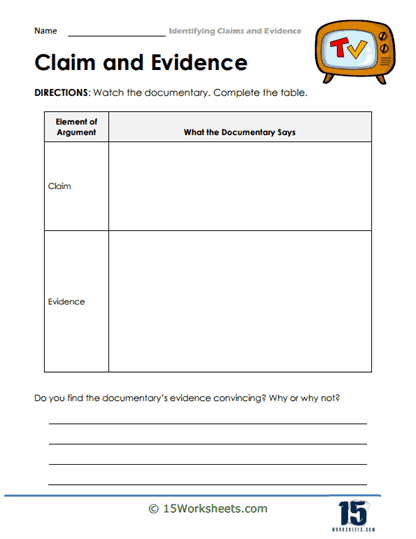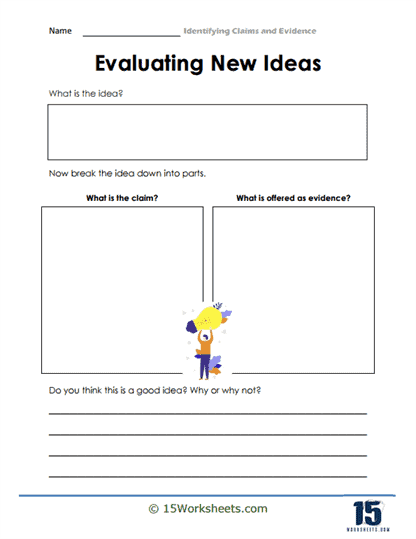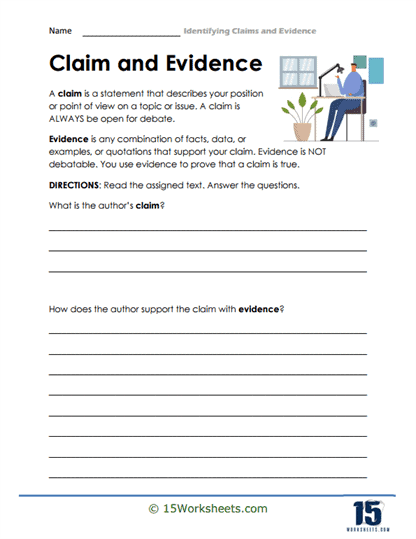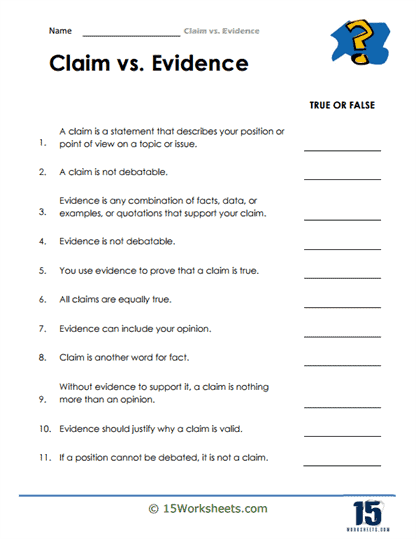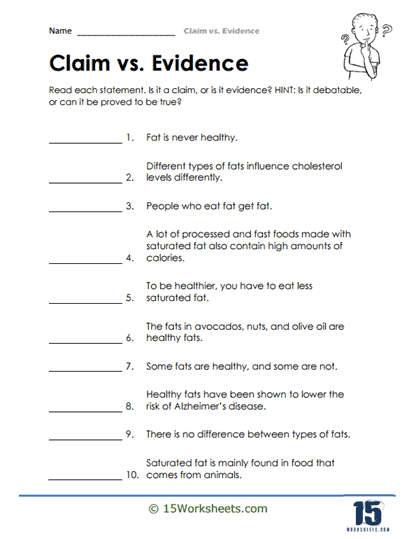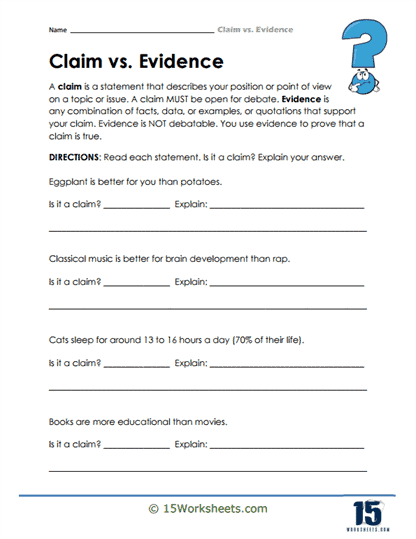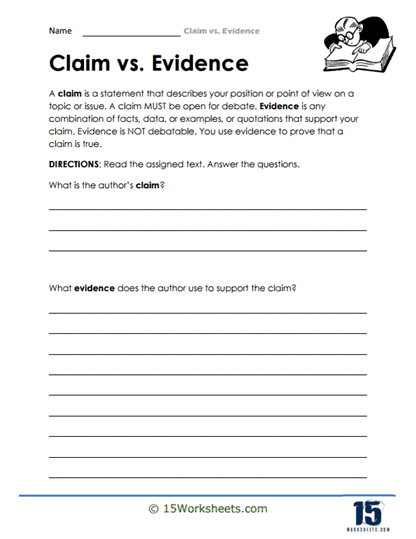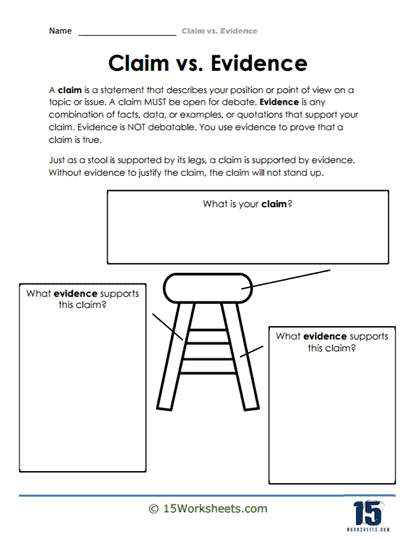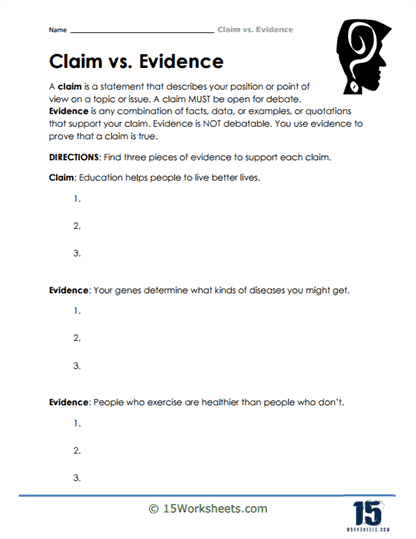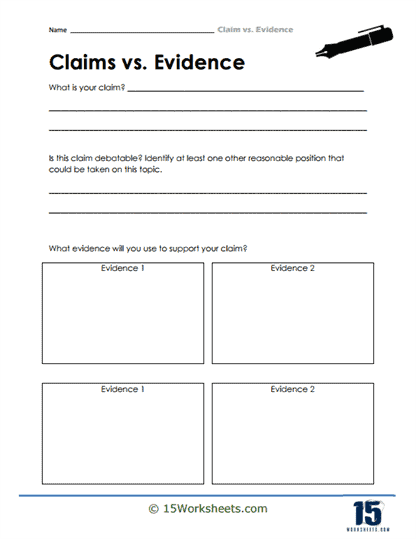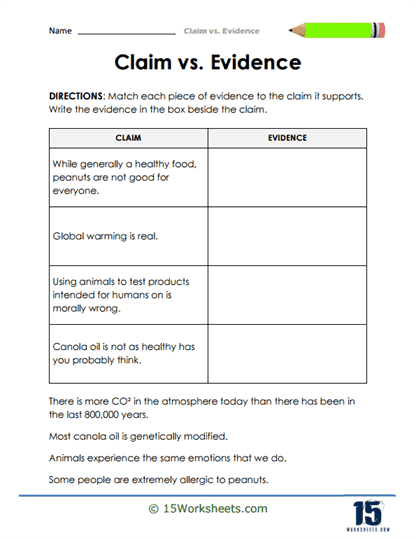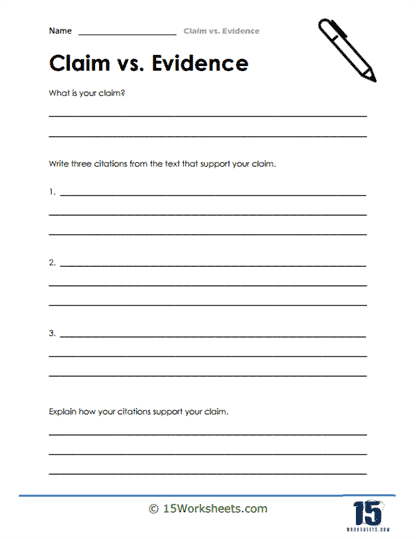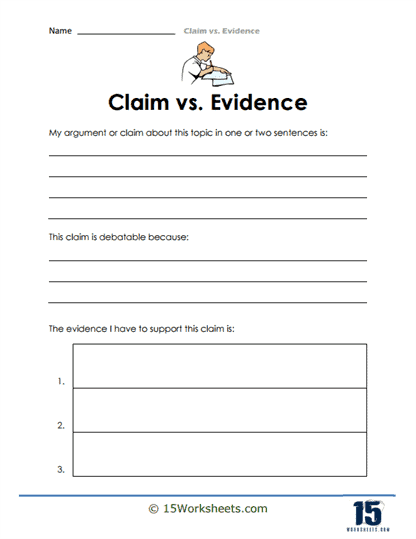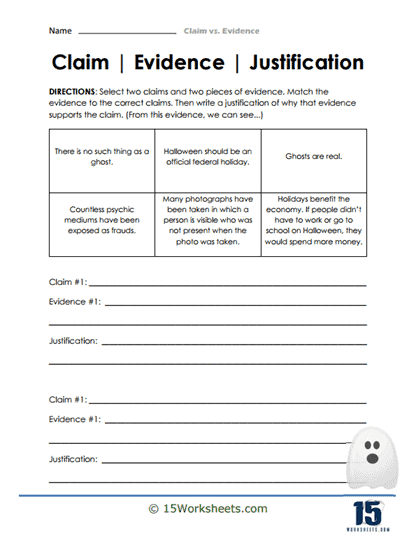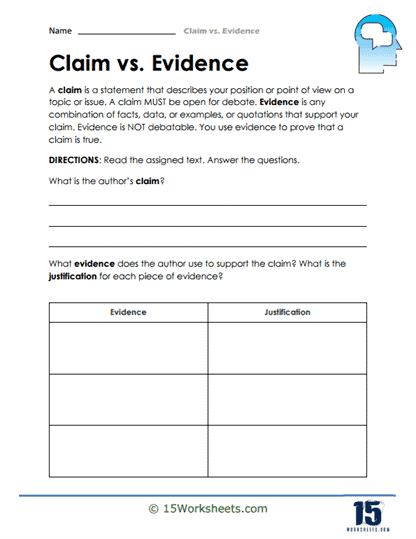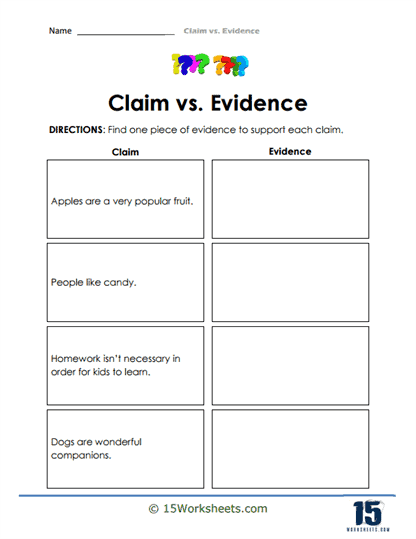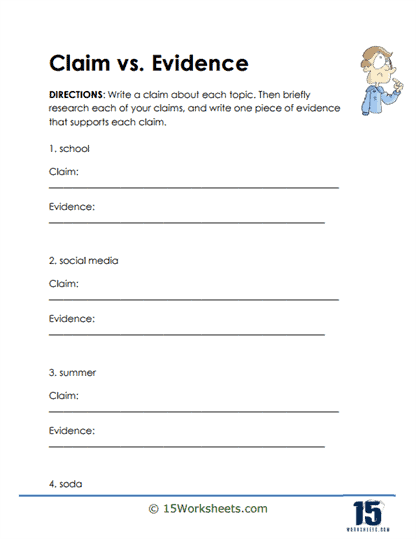Claim vs. Evidence Worksheets
All About These 15 Worksheets
These Claim vs. Evidence worksheets are designed to help students understand the relationship between claims and evidence in persuasive writing and argumentation. These worksheets include examples of claims and evidence, along with questions and activities that encourage students to analyze and evaluate the quality of the evidence presented to support a claim.
By completing these worksheets, students learn to identify claims and evidence, and to evaluate whether the evidence supports the claim. They also learn to consider the credibility and reliability of the evidence presented, and to use evidence to justify their own claims and arguments. Through these worksheets, students will:
- Distinguish claim from evidence;
- Understand the relationship of claim and evidence and how they can strengthen ideas or arguments;
- Identify the claim and evidence presented after thoroughly reading assigned passages;
- Develop critical thinking skills by learning to deduce whether the claim presented and the evidence that supports it is sufficient enough for the idea;
- And be able to come up with their own claim, supporting evidence, and justification.
By learning about Claim vs. Evidence, students develop analytical skills that are valuable in many different areas of life, from academic research to personal decision-making. They also learn to communicate their own ideas and opinions more effectively, by using evidence to support their claims and arguments.
Identifying Claims and Types of Evidence in Writing
A claim is a statement that something is true. In writing, claims are often made to persuade the reader of something. To be persuasive, a claim must be supported by evidence.
Types of Evidence
Different types of evidence can support a claim while writing; each has advantages and disadvantages. Here are some of the most common.
- Anecdotal Evidence
Anecdotal evidence is defined as information that is based on someone’s observations or experiences. In other words, it is evidence that is not statistically significant or unable to be scientifically proven. Anecdotal evidence is often used in advertising and sales pitches to convince potential customers of a product or service’s effectiveness.
Anecdotal evidence can be convincing, but it is essential to remember that it is not always reliable. Just because someone had a good experience with a product does not mean that you will have the same experience.
- Statistical Evidence
Statistical evidence is often used to back up claims made in writing. This type of evidence can be very persuasive, providing factual data to support an argument. However, it is vital to be aware of statistical evidence’s limitations and use it carefully to avoid making misleading or inaccurate claims.
One common limitation of statistical evidence is that it can be cherry-picked to support a particular argument. For instance, if someone wants to argue that a specific policy is effective, they might only present data that show positive results from the policy while ignoring data that shows adverse effects. This can make it difficult for readers to assess the whole picture and conclude.
- Scientific Evidence
Scientific evidence is the data that supports or disproves a hypothesis. It is collected through observation and experimentation and analyzed using the scientific method. There are two types of scientific evidence: observational and experimental. Observational evidence is data that is collected through observing the natural world. Experimental evidence is data that is collected through controlled experiments.
Observational evidence is used to support or disprove hypotheses. When scientists observe the natural world, they look for patterns.
You can use these patterns to support or disprove theories. While on the other hand, experimental evidence is used to endorse or disprove hypotheses. In an experiment, scientists create a controlled environment in which they can manipulate one or more variables.
- Analogical Evidence
Analogical evidence is a type of reasoning that relies on an analogy, or comparison, between two different things. In legal writing, analogical evidence is often used to support a claim or argument by showing that something similar has happened in the past.
Analogical reasoning can be a powerful tool, but it’s essential not to overdo it. If you try to make too many comparisons, or if the things you’re comparing are too different, your argument may not be persuasive.
- Testimonial Evidence
Testimonial evidence is a type of evidence based on a witness’s testimony. You can use this type of evidence to support or refute a claim made in a piece of writing. Testimonial evidence can be either first-hand or second-hand. There are a few things to remember when using testimonial evidence in your writing.
First, it is essential to make sure that the witness is credible. This means they should be an expert on the subject or have some personal experience with it. Second, you should ensure that the testimony is relevant to your claim. This means that it should support or refute the claim in some way. Finally, you should make sure that the testimony is reliable. This means that it should be consistent with other evidence that you have.
Something to Remember
Using testimonial evidence to support a claim, it is essential to remember that the person giving the testimony is just one person. Their testimony should not be the only evidence you use to support your claim. It would help if you also looked for other types of evidence, such as scientific evidence or experts’ opinions, to back up your claim.





